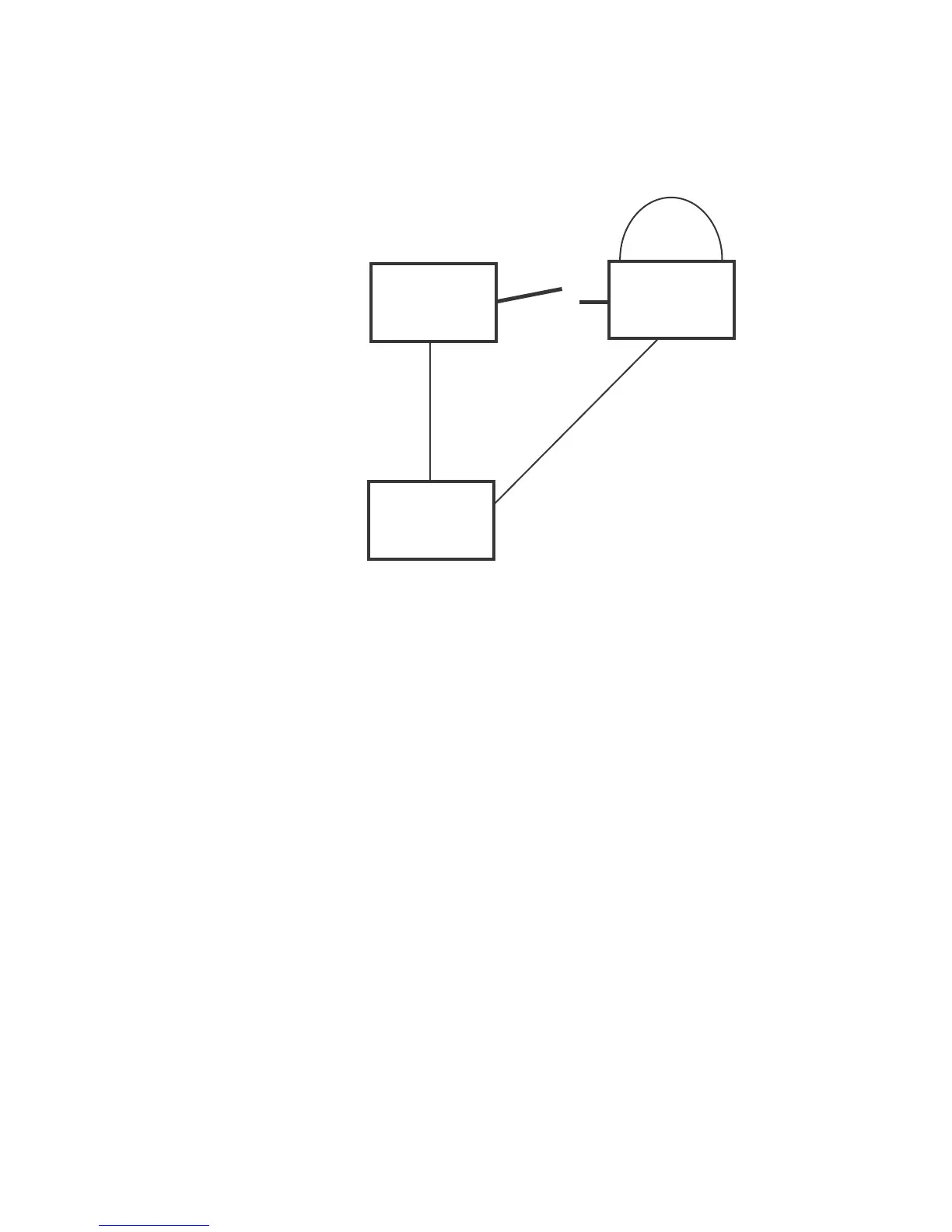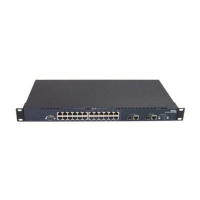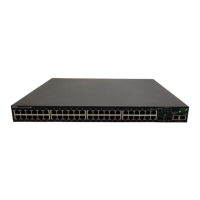BigIron RX Series Configuration Guide 377
53-1002253-01
Convergence in a simple topology
13
FIGURE 56 Link failure in the topology
Switch 1 sets its Port2 into a discarding state.
At the same time, Switch 2 assumes the role of a root bridge since its root port failed and it has no
operational Alternate port. Port3/Switch 2, which currently has a Designated port role, sends an
RST BPDU to Switch 3. The RST BPDU contains a proposal flag and a bridge ID of Switch 2 as its
root bridge ID.
When Port3/Switch 3 receives the RST BPDUs, RSTP algorithm determines that they are inferior to
those that the port can transmit. Therefore, Port3/Switch 3 is given a new role, that of a
Designated port. Port3/Switch 3 then sends an RST BPDU with a proposal flag to Switch 2, along
with the new role information. However, the root bridge ID transmitted in the RST BPDU is still
Switch 1.
When Port3/Switch 2 receives the RST BPDU, RSTP algorithm determines that it is superior to the
RST BPDU that it can transmit; therefore, Port3/Switch 2 receives a new role; that of a Root port.
Port3/Switch 2 then sends an RST BPDU with an agreed flag to Port3/Switch 3. Port3/Switch 2
goes into a forwarding state.
When Port3/Switch 3 receives the RST BPDU that Port3/Switch 2 sent, Port3/Switch 3 changes
into a forwarding state, which then completes the full convergence of the topology.
Convergence at link restoration
When Port2/Switch 2 is restored, both Switch 2 and Switch 1 recognize the change. Port2/Switch
1 starts assuming the role of a Designated port and sends an RST BPDU containing a proposal flag
to Port2/Switch 2.
Bridge priority = 2000
Bridge priority = 1000
Switch 2
Switch 3
Switch 1
Port2
Port2
Port3
Port3
Port3
Port4
Port4
Port5

